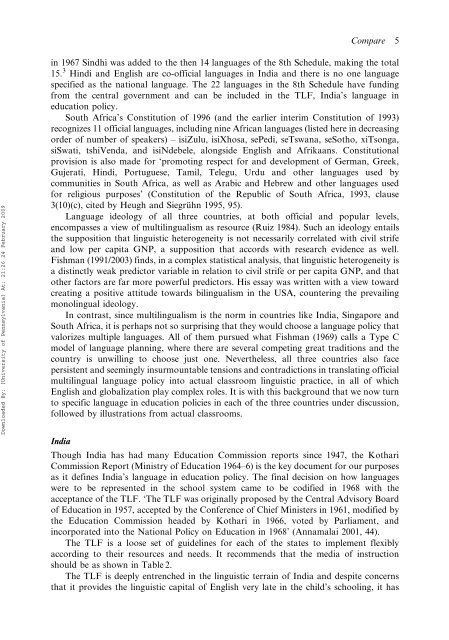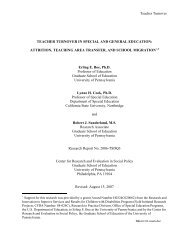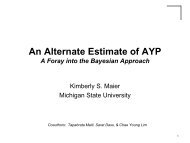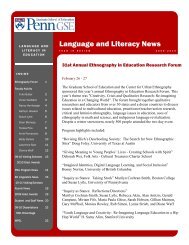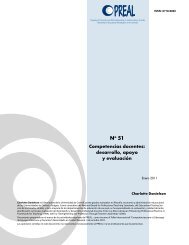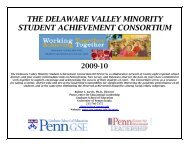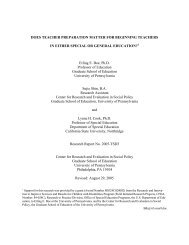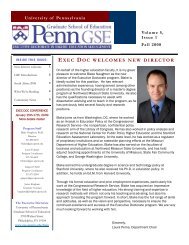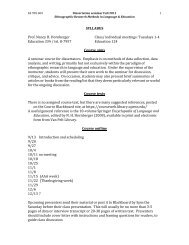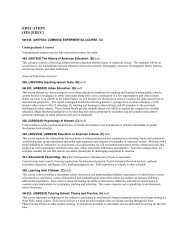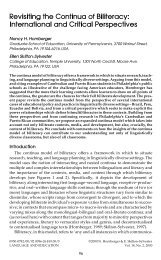Multilingual language policy and school linguistic practice
Multilingual language policy and school linguistic practice
Multilingual language policy and school linguistic practice
You also want an ePaper? Increase the reach of your titles
YUMPU automatically turns print PDFs into web optimized ePapers that Google loves.
Compare 5<br />
Downloaded By: [University of Pennsylvania] At: 21:26 24 February 2009<br />
in 1967 Sindhi was added to the then 14 <strong>language</strong>s of the 8th Schedule, making the total<br />
15. 3 Hindi <strong>and</strong> English are co-official <strong>language</strong>s in India <strong>and</strong> there is no one <strong>language</strong><br />
specified as the national <strong>language</strong>. The 22 <strong>language</strong>s in the 8th Schedule have funding<br />
from the central government <strong>and</strong> can be included in the TLF, India’s <strong>language</strong> in<br />
education <strong>policy</strong>.<br />
South Africa’s Constitution of 1996 (<strong>and</strong> the earlier interim Constitution of 1993)<br />
recognizes 11 official <strong>language</strong>s, including nine African <strong>language</strong>s (listed here in decreasing<br />
order of number of speakers) – isiZulu, isiXhosa, sePedi, seTswana, seSotho, xiTsonga,<br />
siSwati, tshiVenda, <strong>and</strong> isiNdebele, alongside English <strong>and</strong> Afrikaans. Constitutional<br />
provision is also made for ‘promoting respect for <strong>and</strong> development of German, Greek,<br />
Gujerati, Hindi, Portuguese, Tamil, Telegu, Urdu <strong>and</strong> other <strong>language</strong>s used by<br />
communities in South Africa, as well as Arabic <strong>and</strong> Hebrew <strong>and</strong> other <strong>language</strong>s used<br />
for religious purposes’ (Constitution of the Republic of South Africa, 1993, clause<br />
3(10)(c), cited by Heugh <strong>and</strong> Siegrühn 1995, 95).<br />
Language ideology of all three countries, at both official <strong>and</strong> popular levels,<br />
encompasses a view of multilingualism as resource (Ruiz 1984). Such an ideology entails<br />
the supposition that <strong>linguistic</strong> heterogeneity is not necessarily correlated with civil strife<br />
<strong>and</strong> low per capita GNP, a supposition that accords with research evidence as well.<br />
Fishman (1991/2003) finds, in a complex statistical analysis, that <strong>linguistic</strong> heterogeneity is<br />
a distinctly weak predictor variable in relation to civil strife or per capita GNP, <strong>and</strong> that<br />
other factors are far more powerful predictors. His essay was written with a view toward<br />
creating a positive attitude towards bilingualism in the USA, countering the prevailing<br />
monolingual ideology.<br />
In contrast, since multilingualism is the norm in countries like India, Singapore <strong>and</strong><br />
South Africa, it is perhaps not so surprising that they would choose a <strong>language</strong> <strong>policy</strong> that<br />
valorizes multiple <strong>language</strong>s. All of them pursued what Fishman (1969) calls a Type C<br />
model of <strong>language</strong> planning, where there are several competing great traditions <strong>and</strong> the<br />
country is unwilling to choose just one. Nevertheless, all three countries also face<br />
persistent <strong>and</strong> seemingly insurmountable tensions <strong>and</strong> contradictions in translating official<br />
multilingual <strong>language</strong> <strong>policy</strong> into actual classroom <strong>linguistic</strong> <strong>practice</strong>, in all of which<br />
English <strong>and</strong> globalization play complex roles. It is with this background that we now turn<br />
to specific <strong>language</strong> in education policies in each of the three countries under discussion,<br />
followed by illustrations from actual classrooms.<br />
India<br />
Though India has had many Education Commission reports since 1947, the Kothari<br />
Commission Report (Ministry of Education 1964–6) is the key document for our purposes<br />
as it defines India’s <strong>language</strong> in education <strong>policy</strong>. The final decision on how <strong>language</strong>s<br />
were to be represented in the <strong>school</strong> system came to be codified in 1968 with the<br />
acceptance of the TLF. ‘The TLF was originally proposed by the Central Advisory Board<br />
of Education in 1957, accepted by the Conference of Chief Ministers in 1961, modified by<br />
the Education Commission headed by Kothari in 1966, voted by Parliament, <strong>and</strong><br />
incorporated into the National Policy on Education in 1968’ (Annamalai 2001, 44).<br />
The TLF is a loose set of guidelines for each of the states to implement flexibly<br />
according to their resources <strong>and</strong> needs. It recommends that the media of instruction<br />
should be as shown in Table 2.<br />
The TLF is deeply entrenched in the <strong>linguistic</strong> terrain of India <strong>and</strong> despite concerns<br />
that it provides the <strong>linguistic</strong> capital of English very late in the child’s <strong>school</strong>ing, it has


